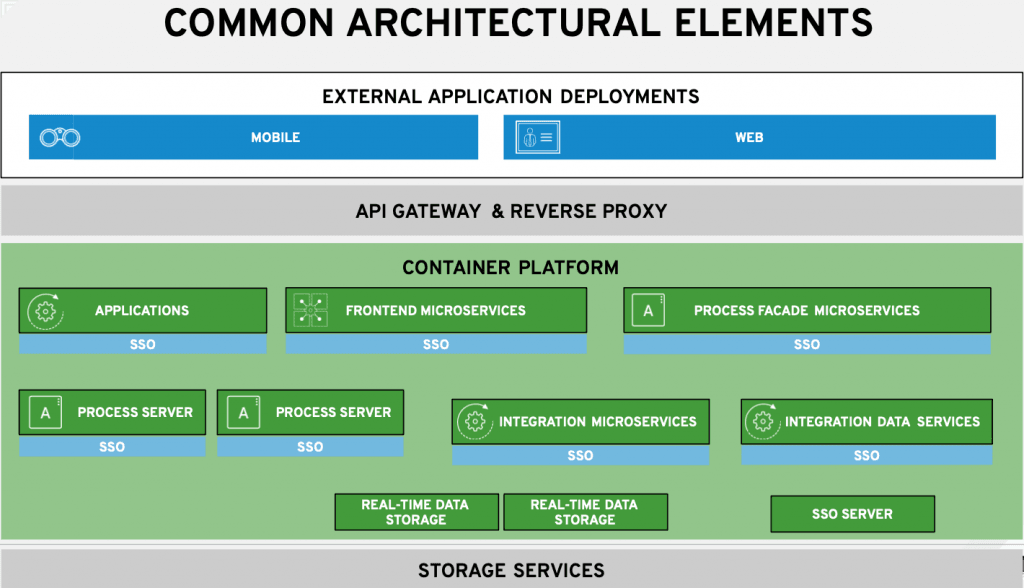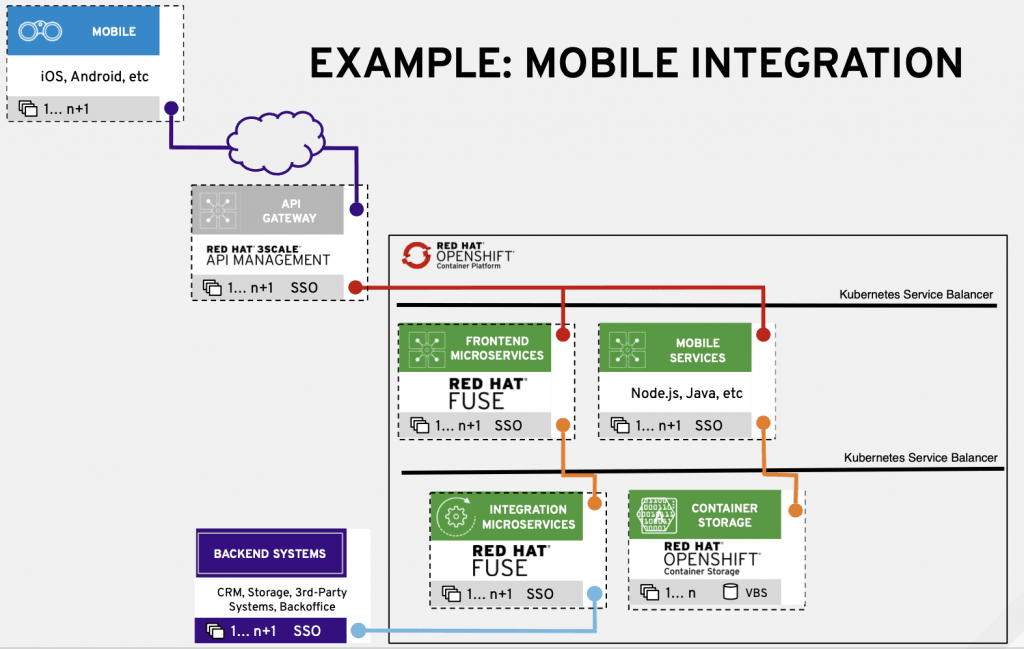Integration Key to Customer Experience – Example Mobile Integration
Inmy previous article from this series we looked in to details that determine how your integration becomes the key to transforming your customer experience.
It started with laying out the process of how I’ve approached the use case by researching successful customer portfolio solutions as the basis for a generic architectural blueprint.

Let’s continue looking at more specific examples of how these blueprints solve specific integration use cases.
This article walks you through an example integration scenario showing how expanding the previously discussed details provides blueprints for your own integration scenarios.
Blueprint scenario
As mentioned before, the architectural details covered here are base on real customer integration solutions using open source technologies. The example scenario presented here is a generic common blueprint that was uncovered researching customer solutions. It’s my intent to provide a blueprint that provides guidance and not deep technical details.
This section covers the visual representations as presented, but it’s expected that they’ll be evolving visually over time. There are many ways to represent each element in this architectural blueprint, but I’ve chosen icons, text and colours that I hope are going to make it all easy to absorb. Feel free to post comments at the bottom of this post, orcontact me directly with your feedback.

Now let’s take a look at the details in this blueprint and outline the solution.
Mobile integration
The example blueprint shown in the figure titled Example: Mobile Integration outlines how to integrate automation in to your architecture. In this example, starting from the top, a mobile device is used to connect to your services through an API gateway. It’s leveraging a group of microservices that provide frontend functionality. These frontend microservices are gathering data and information from the various organizational backend systems by working through
integration microservices.
Another group of microservices show how the mobile services (that were discussed in generic terms in theprevious article) are providing mobile specific services such as push notifications, synchronisation, and more. This shows how customers are using generic architectural integration concepts such as microservices to solve their reliance on specific mobile platform solutions.
Here storage services are not displayed, instead reliance on container native storage is used for the various mobile services when maintaining application data, for mobile analytics, and any other persistence needs.
There is a conscience effort here to keep this blueprint example as concise as possible, therefore the integration of various potentialbackend systems has been simplified to a single representative box.
What’s next
This overview covers the first example architecture blueprints on process integration for omnichannel customer experience use case.
An overview of the series on omnichannel customer experience portfolio architecture blueprint can be found here:
- An introduction
- Generic common architectural elements
- External application details
- API management details
- Container platform essentials
- Storage services
- Example process integration
- Example mobile integration
- More example integration blueprints
Catch up on any articles you missed by following one of the links above.
Next in this series, we start taking a look at more specific integration architecture blueprints that tie in all the elements we’ve discussed as part of a specific case in an architecture for omnichannel customer experience.
Published on Java Code Geeks with permission by Eric Schabell, partner at our JCG program. See the original article here: Integration Key to Customer Experience – Example Mobile Integration Opinions expressed by Java Code Geeks contributors are their own. |









